

History of Classical Music: A Journey Through Time
The history of classical music begins from the start of a changing world. Classical music was born in ancient Greece and Rome. There, musicians play instruments invented hundreds of years earlier. In medieval Europe, composers began writing for specific occasions, such as weddings and funerals. Then, composers started writing pieces to perform in court during the Renaissance.
The word “classical” refers to many different things. But when it comes to music, it refers specifically to the period from about 1600 through 1900. The classical era is the Golden Age of music. This is because so many great composers created the best pieces of music during that time.
This article will provide you with an introduction to the history of classical music. In addition, you will learn about some of the most influential composers and their contributions to classical music.
Different Eras
- Renaissance
- Baroque
- Classical
- Romantic
- Modern
Medieval Era
The Medieval era, also known as the Middle Ages. It is a period of music in European history spanning from the 5th century to the 15th century. During this time, music and religious settings were. Catholic Church plays a dominant role in shaping musical traditions.
Medieval music is characterized by its monophonic texture, meaning that only one melody at a time without accompanying harmonies. The melodies were often sung in Latin. Music is based on religious texts, such as psalms and hymns.
One of the most significant contributions of Medieval music was the development of notation. This allowed composers to write down their music and preserve it for future generations. The earliest notated music dates back to the 9th century. It was written using neumes. Symbols were above the text to indicate the pitch and rhythm of the melody.
The most prominent musical form during the Medieval era was the Gregorian chant. A choir of monks sang in a monophonic melody. These chants were in Latin and used in the Catholic Church’s liturgy. Over time, composers began to add more complexity to the chants, adding new melodies and harmonies to create polyphonic music. Two or more tunes played simultaneously.
One of the most famous Medieval composers was Hildegard von Bingen, a German nun who lived in the 12th century. She composed sacred music, including chants and hymns, known for their expressive melodies and innovative harmonies. Her music remains an integral part of the Medieval music repertoire.
Overall, the Medieval era was a significant period in developing classical music. It Laid the foundation for the complex harmonies and forms that would emerge in later centuries.
Renaissance Era
The Renaissance is a period of European music history from the 14th to the 17th century. This era is best for its artistic and intellectual achievements. During this time, classical music underwent significant changes. Composers explored new styles and forms that emphasized the humanistic ideals of the period.
One of the most significant developments of the Renaissance era was the rise of polyphony. Two or more independent melodies play simultaneously. This technique allowed composers to create complex and richly textured harmonies. Those were impossible in the monophonic music of the Medieval era.
Another significant development was the emergence of music printing, which allowed composers to distribute their music more widely and efficiently. This thing increased the availability and popularity of music and contributed to the growth of a professional class of musicians.
One of the most famous composers of the Renaissance era was Giovanni Pierluigi da Palestrina. He was an Italian composer best for his sacred music, particularly his masses. His music was clear and balanced polyphony and a model for other period composers.
Other prominent composers of the Renaissance include Thomas Tallis and William Byrd. They experimented with new harmonic and melodic techniques and helped establish the foundations of classical music.
The Renaissance era was a time of great creativity and innovation in classical music. Composers explored new styles, forms, and techniques that would influence the development of music for centuries to come.
Baroque Era (1600-1750)
The Baroque period spans from the late 16th century to the early 18th century. It is known for its elaborate and ornate artistic and musical styles. Baroque music is complex and has intricate textures, dramatic expression, and use of ornamentation.
One of the most significant developments of the Baroque era was the emergence of opera . Opera is a musical theater that combines singing, acting, and orchestral music. Composers such as Claudio Monteverdi and George Frideric Handel pioneered the operatic form. This became one of the most popular and influential genres of classical music.
The Baroque era also saw the rise of instrumental music. Composers such as Johann Sebastian Bach and Antonio Vivaldi created virtuosic works for solo instruments and small ensembles. These works often featured complex and intricate melodies, with the solo instrument as the composition’s focal point.
Another significant development of the Baroque era was the emergence of the concerto. This form of instrumental music features a soloist accompanied by an orchestra. Concertos were to showcase the soloist’s virtuosity. Composers such as Bach and Vivaldi wrote some of the most famous concertos of the era.
Baroque music has elaborate ornamentation, such as trills, turns, and mordents, adding drama and expressiveness. Composers often wrote in complex and ornate styles. Intricate counterpoint and rich harmonies created a sense of grandeur and splendor.
Classical Era (1750-1820)
The classical era of music spanned from the mid-18th century to the early 19th century. It is known for its elegant and balanced artistic and musical styles. Classical music has clarity, simplicity, and balance of melody, harmony, and rhythm.
One of the most significant developments of the classical era was the emergence of the symphony. This is a form of orchestral music typically consisting of four movements. Composers such as Wolfgang Amadeus Mozart, Joseph Haydn, and Ludwig van Beethoven wrote some of the most famous symphonies of the era—their works with elegant melodies and precise melodies harmonies, and balanced structures. As a result, their works are the best in the history of classical music .
The classical era was also known for developing the sonata form. This musical structure typically consists of three movements and is used in instrumental music, such as the piano sonata and the string quartet.
Another significant development of this era was the emergence of the concerto as a primary genre of classical music. Great composers such as Mozart and Beethoven wrote some of the most famous concertos of the era. Those featured a soloist accompanied by an orchestra. These works were often elegant and virtuosic melodies. The soloist and orchestra perfectly harmonize to create a beautiful and balanced composition. The classical era is a reflection of the values of the Enlightenment, with its emphasis on rationality, order, and clarity. Their legacy continues to influence classical music to this day.
Romantic Era (1820-1900)
The Romantic period spanned from the late 18th century to the early 20th century. This era is known for its passionate and dynamic artistic and musical styles. Romantic music has rich harmonies, expressive melodies, and dramatic contrasts.
One of the most significant Romantic era developments was the symphonic poem’s emergence. This form of orchestral music is based on a narrative or programmatic idea. Composers such as Franz Liszt and Richard Strauss were pioneers of the symphonic poem. It allows composers to express their emotions and thoughts more directly and personally.
The Romantic era also saw the rise of the virtuoso soloist, with composers such as Niccolo Paganini and Franz Liszt. They create virtuosic works for solo instruments such as the violin and piano. These works often featured complex and technical passages. But, again, the soloist showcased their technical skill and virtuosity.
Another significant development of the Romantic era was the orchestra’s expansion. Composers use more extensive and diverse ensembles to create more expressive and dramatic works. Composers like Hector Berlioz and Gustav Mahler were known for their innovative and expressive orchestration. This allowed them to create a wide range of emotional and dramatic effects.
Romantic music was also known for its use of exoticism and nationalism in the history of classical music. Components drew inspiration from non-Western cultures and incorporated folk elements from their countries into their works. This helped create a sense of national identity and pride and helped shape Europe’s cultural landscape during this time. The Romantic era was a time of great emotional and artistic expression in classical music.
Modern Era (1900-Present)
The modern era of music began in the early 20th century and continues to the present day. Various musical styles and genres, new technologies, and unconventional forms of composition characterize the modern era.
One of the most significant modern-era developments was the emergence of new musical styles, such as jazz, blues, rock and roll, and electronic music. These new styles incorporated elements from diverse musical traditions. For example, African rhythms and blues helped to shape the cultural landscape of the 20th century.
The modern era also saw the development of new techniques and forms of composition, such as serialism and atonality. Composers such as Arnold Schoenberg and Igor Stravinsky pioneered these new techniques. Another significant development of the modern era was using new technologies in music production and composition. For example, the advent of recording technology, electronic instruments, and computer-based music software. These revolutionized the creation of music and also recording and distribution. There is always a debate between modern and classical music .
In the modern era, a renewed interest in experimentation and collaboration. With composers and musicians from different musical traditions and cultures coming together to create new and innovative works. This new way has led to new genres, such as world music, fusion, and avant-garde.
Overall, the modern era of music is a diverse and dynamic period of musical history. It continues to evolve and change with the times. Its legacy is in various musical genres and styles and its influence on today’s music.
The history of classical music is a fascinating journey through time, culture, and artistic expression. From the ornate and complex pieces of the Baroque era to the experimental and innovative music of the Modern period. Classical music has evolved and adapted to reflect the changing world. Traditional or modern classical music, there is something for everyone in this rich and diverse art form.
The history of classical music is full of creative genius and innovation. With each new era, more talented composers and musicians created unique works of art. Those would stand the test of time.
FB Page: Classical Beast
7 thoughts on “History of Classical Music: A Journey Through Time”
Pingback: All About Classical Music - Classical Beast
Pingback: Classical Music vs Modern Music - Classical Beast
Pingback: Best Classical Music Pieces - Classical Beast
Pingback: Best Classical Music Composers of The Age - Classical Beast
Pingback: Surprising Benefits of Classical Music - Classical Beast
Pingback: Best Mozart Pieces- A Guide to the Masterpieces
Pingback: The Best Piano Pieces from Popular Musicians
Comments are closed.
- International edition
- Australia edition
- Europe edition

The 10 best: pieces inspired by trains
Bruckner and Dvořák loved them, Wagner hated them and Mendelssohn found a trip on a free-wheeling locomotive “agony for the nerves”. On the day that fares rise while many services fail to satisfy, we look at which composers have got steamed up about trains
Johann Strauss I: Eisenbahn-Lust Waltz (Railway Delight Waltz), 1836
The elder Johann Strauss’s Eisenbahn-Lust celebrated the opening of the first public railway line out of Vienna, to Breclav (now Břeclav, in the Czech Republic). It begins – and sort of ends – with steam locomotive sounds and is the first of several railway pieces by members of the Strauss family, keen as they were to cash in on this fast-expanding industry.
Glinka: Travelling Song (The Train Song), 1840
Described by the New Grove Dictionary of Music and Musicians as “probably the first ever railway song”, Glinka’s express Travelling Song is a setting of a text by his friend Nestor Kukolnik. It contains such lines as “The train shoots forward and speeds through the countryside / freer than the wind .” The music is suitably clickety-click.
Alkan: Le Chemin de Fer, 1844
Charles Alkan was a friend of Chopin and Liszt who composed piano music of considerable technical complexity and adventurousness. An example of this (though hardly the greatest) is Le Chemin de Fer, a five-minute moto perpetuo evoking what was then an entirely new speed.
Berlioz: Le Chant des Chemins de Fer, 1846
Berlioz’s grand cantata for tenor and six-part chorus was commissioned by the Chemin de Fer du Nord to mark the opening of the Paris to Lille and Brussels railway line in June 1846. Having just undertaken an arduous European tour largely by stagecoach, Berlioz was an enthusiastic advocate of train travel and jumped at the chance, completing the work in a few days. It was performed in 1975 at a concert in the Royal Albert Hall celebrating the 150th anniversary of the Stockton and Darlington Railway and in 1994 at the launch ceremony of the Eurostar service.
Dvořák: Humoresque No 7, 1894
Dvořák was, literally, a trainspotter: he loved nothing more than visiting the Franz-Josef Station in Prague and loved chatting with locomotive engineers. Although he never expressed this passion in music, in the 1930s the tune of his popular Humoresque No 7 became the setting of a mildly scatological verse about one of the more potentially uncomfortable restrictions of train travel: “Passengers will please refrain from flushing toilets while the train is standing in the station.”
Grainger: Arrival Platform Humlet, 1908
Percy Grainger adored travelling by train, and during journeys loved to spread his manuscripts out and compose. In his own words, Arrival Platform Humlet (Humlet being a little ditty to hum) derived from: “awaiting the arrival of a belated train bringing one’s sweetheart from foreign parts: great fun! The sort of thing one hums to oneself as an accompaniment to one’s tramping feet as one happily, excitedly, paces up and down the arrival platform.” It was said to have been composed at London’s Liverpool Street and Victoria Stations in 1908.
Ives: From Hanover Square North, 1915-19, rev circa 1929
On 7 May 1915, the day the Lusitania was sunk by a German torpedo at the cost of more than 1,000 lives, Charles Ives was standing on an elevated railway platform listening to a barrel organ playing the song In the Sweet By-and-By. One by one, everyone in the station joined in. Ives recorded this extraordinary collective experience in From Hanover Square North, at the End of a Tragic Day, the Voice of the People Again Arose. Ives’s The Celestial Railroad , however, is arguably a more genuine piece of train music. The work was inspired by Nathaniel Hawthorne’s fantastical short story in which a passenger boards a supposedly heaven-bound train.
Honegger: Pacific 231, 1923
“I have always loved locomotives passionately,” said Arthur Honegger. “For me they are living creatures, and I love them as others love women or horses.” The most famous railway-related piece was the result, although Honegger denied it was descriptive music. Nevertheless, in 1949, he didn’t object when Jean Mitry’s award-winning film Pacific 231, a tribute to the steam locomotive, used the work as its soundtrack.
Villa-Lobos: The Little Train of the Caipira, 1930
Part of Villa-Lobos’s Bachianas Brasileiras No 2, The Little Train of the Caipira colourfully replicates the sounds of an ageing and rusting steam locomotive as it gradually stutters its way up to full speed across the Brazilian plain. Train music from the first-class compartment.
Britten: Night Mail, 1936
In 1936, Britten and the poet WH Auden were commissioned to provide music and text for the GPO documentary Night Mail. The film records the transport of mail by train from London, through the English shires and the industrial north, to early morning in rural Scotland and finally to Glasgow. To create the effect of a steam locomotive accumulating energy with the pistons driving the wheels, Britten utilised a most unorthodox percussion section, which included “Steam”, “Rail”, “Siren” and “Coal falling down shaft”. His research involved a freezing night on a railway platform. Dvořák, no doubt, would have loved it.
- Classical music
- 10 of the best classical
Comments (…)
Most viewed.
MUSIC STREAMING FOR BUSINESSES

Jukeboxy Blog
Jukeboxy Music for Business
Harmony Through Ages: The Timeless Journey of Classical Music

The timeless allure of classical music, spanning from the intricate compositions of Bach to the dynamic symphonies of Beethoven, represents an enduring saga of artistic brilliance and emotional depth. This captivating journey through the centuries unveils the sheer elegance and transformative power of a genre that has profoundly shaped the cultural fabric of societies worldwide.
The Symphony of Evolution: An Ode to Centuries of Innovation
Classical music, with its origins deeply rooted in the annals of history, embarks on a continual journey of evolution, intricately weaving innovation with cherished traditions. Each era, from the resplendent Baroque period to the expressive Romantic age, brings forth composers whose works challenge the boundaries of musical expression, crafting a legacy that resonates through time. The genius of figures such as Mozart and Bach lies not only in their timeless compositions but also in their ability to encapsulate the human condition, making classical music a universal medium of emotional dialogue.
The Quintessential Language of the Soul

One of the most profound aspects of music is its universal language, transcending the confines of time and geography to touch the very essence of the human spirit. It is in the delicate interplay of melody and harmony that classical music finds its voice, capable of conveying the deepest of emotions without uttering a single word. This unique ability to evoke a spectrum of feelings, from exhilaration to despair, renders music an eternal source of solace and inspiration, bridging hearts and minds across diverse cultures.
An Unfading Legacy: Classical Music in the Modern Tapestry
Despite the ever-evolving landscape of the music industry, the legacy of classical music remains unfaded, continually enriching the lives of listeners and influencing contemporary genres. Its timeless appeal is celebrated in concert halls and digital platforms alike, connecting new generations to the profound beauty and intricate craftsmanship of classical compositions. As classical music adapts to the digital age, it not only preserves its rich heritage but also ignites a flame of creativity and innovation, ensuring its relevance and resonance in today’s global culture.
A Timeless Ode to Humanity
The enduring elegance of classical music serves as a testament to the indomitable spirit of human creativity and expression. It invites us on a transcendent journey through the tapestry of time, where each note and melody tells a story of triumph, tragedy, and the enduring beauty of life itself. As we delve into the captivating world of classical music , we are reminded of its power to unite, inspire, and uplift, offering a timeless ode to the richness of human experience and the unbreakable bonds that music forges among us all.
Related Posts

Exploring the ROI of Background Music in Corporate Settings
In the modern corporate landscape, the strategic use of ROI background music can play a pivotal role in enhancing both employee productivity and customer satisfaction. At Jukeboxy, we understand the nuanced impact that the right soundtrack can have on a corporate environment. Let’s explore how carefully selected tunes can revolutionize the atmosphere in your workplace […]

Cultural Considerations: Selecting Music for a Diverse Clientele
As a business owner, your background music can significantly enhance the atmosphere and deeply connect with a diverse clientele. Understanding how to select music that resonates across cultural boundaries strategically is critical. Here, we will explore several essential considerations to help you choose the perfect musical backdrop for your varied audience. Cultural Considerations Firstly, understanding […]

Creating Brand Identity with Music: Case Studies from Leading Businesses
At Jukeboxy, we understand the immense power of music in forging a compelling brand identity. This article explores how top businesses harness this potential, turning simple melodies into iconic brand signatures that resonate deeply with their audience. Join us as we delve into effective strategies to elevate your brand’s presence in the marketplace. Crafting Emotional […]

Before you go, check this out!
We have lots more on the site to show you. You've only seen one page. Check out this post which is one of the most popular of all time.
How to Educate Yourself on Classical Music (A 7-Step Roadmap)
For years I’ve been using classical music, especially film scores, for various purposes — relaxing, studying, and evoking feelings of inspiration or wonder, to name just a few.
I even have a playlist on Spotify called “Creative Thinking” that’s all classical music, probably with a bit too much emphasis on the Lord of the Rings score:

Because I believe that the more you understand something the more deeply you can enjoy it, I decided I wanted to learn more about this powerful art form. But I wasn’t sure where to start.
So I got in touch with my friend Tommy, that childhood friend who was always busy on Sunday mornings doing his violin exercises.
I asked him for some advice about how to systematically self-learn the fundamentals of classical music.
That and some other research led me to design this step-by-step roadmap for learning classical music primarily through online courses, books, and your Spotify or Apple Music account.
Whether you want to listen more intelligently to the music you already love or get started on a path toward becoming a self-taught classical musician or composer, this guide is a good starting point. It’ll help you get your intellectual bearings.
1. Learn How to Listen Actively to Classical Music
When you read a book actively, you pay close attention to what the author is doing. You note the key points, the climaxes, and the impressive turns of phrase.
The best classical musicians and scholars do something similar when listening to classical music. Sometimes, instead of letting the music wash over them, they listen actively.
Inside the Score says that classical music is closed off or boring to many people simply because they haven’t learned how to listen to it.
He uses the analogy of reading Shakespeare to explain what he means. Many people find Shakespeare boring, but that’s not because Shakespeare is a poor writer. The student just doesn’t know how to approach his writing style. They need to be taught how.
To learn how to listen to classical music, check out this series from Inside the Score:
This series should give you a solid grasp of how to listen to classical music. After reviewing the series, it’s time to take an intro course.
2. Take Yale’s “Intro to Classical Music” Online Course
Yale’s free online course, Intro to Classical Music , will teach you about rhythm, melody, texture, and how classical uses these elements to impact a listener.
The course also traces the development of music from the middle ages through the classical and romantic periods all the way to the present day, so you’ll learn a lot about music history.
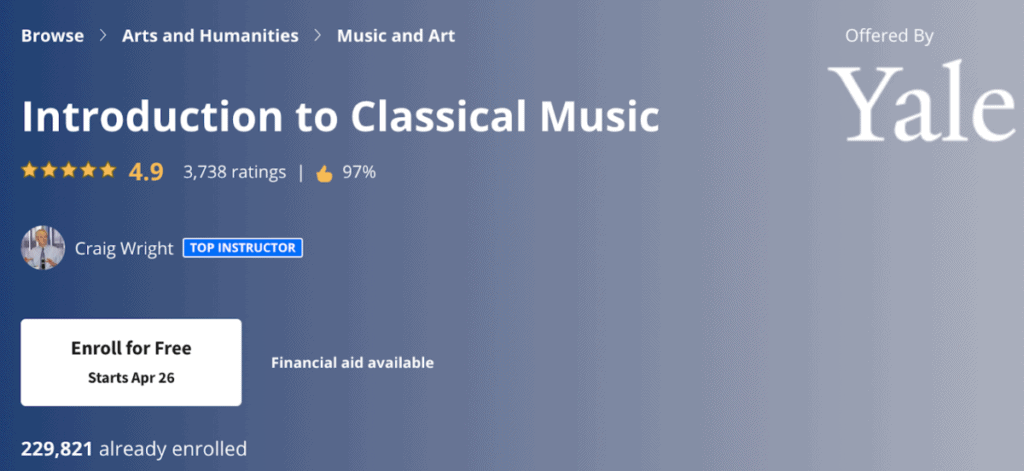
You can access the course through the Coursera platform, which will help you track your progress. The course itself comes with quizzes, readings, and, of course, lecture videos.
3. Start Listening to Classical Music Regularly
I use classical music like medicine. When I’m demotivated or homesick, I’ll put on the Lord of the Rings film score. When I’m feeling uninspired, I’ll listen to something quick like
When I feel numb and hurt, but just can’t get that blockage to let out my emotions, I’ll listen to something that moves me to tears.
But I also make it a daily part of my routine. I like to listen to it in the shower, or on long walks. I find it aids in daydreaming.
Pick some part of your day where you think listening to classical music will fit in, whether that’s to help you read in the morning or relax at night.
By listening regularly, and practicing listening actively, you’ll become better at feeling the moments of majesty in the pieces. You’ll become better at crying and smiling and dreaming.
What Music Should You Listen to as a Beginner?
If you don’t know what to listen to, consider picking your favorite film score. You already have emotional connections to these films, so it’ll be easier to feel the power of the music that accompanies those tragic and breathtaking scenes.
Hans Zimmer, John Williams, and Howard Shore are always fanatics. Some of my favorite scores are Lord of the Rings, Harry Potter, Interstellar, and Dead Poets Society.
Hilariously, or at least that’s how my friends felt, three out of my five most listened-to songs in 2022 were from The Lord of the Rings trilogy score:
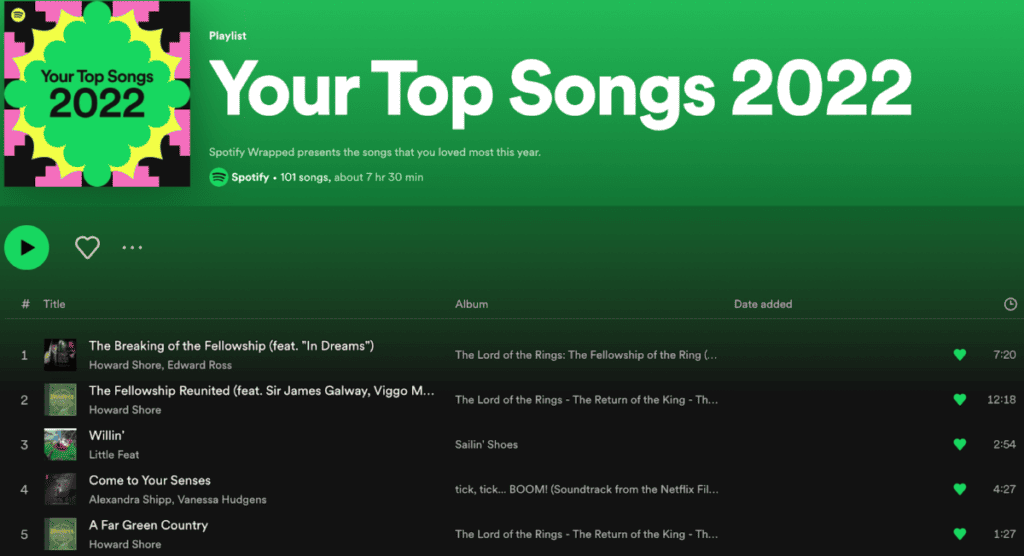
If you really love film score songs from your favorite movies, consider trying out some of the great classical musicians, like Bach or Beethoven. I’m particularly fond of Tchaikovsky.
As for songs, Canon in D, Nocturne Op.9, No.2, Beethoven’s Für Elise, and Le Grand Cahier never fail to move me:
These masters and canonical pieces might be a little harder to appreciate at first, but over time you’ll come to see why their works are so often referred to as masterpieces.
Be Patient With Your Love, Let it Develop
It’s important to know that you might not “get” a lot of classical music at the beginning. Over time, just through listening regularly, your ear will become more trained to the tropes and conventions of the art form, and you’ll start to enjoy it more.
I experienced this process not just in classical music, but also in reading history. When I first started studying long history books, I felt like they were slow, dry, and filled with too many facts.
It was only after about a hundred hours spent reading dense history books and trying to read them well that my brain started to enjoy them.
Some might mistake this as torturing my brain into submission. It might’ve been a bit of that, sure, but it was mostly just a positive effect of my increasing skill level. We tend to like the activities that we’re good at doing.
Through consistent practice, I started to become better at picking out the key concepts, retaining them, and connecting them to other concepts I’d learned. And because of this, the reading was just more fun.
4. Self-Study The Fundamentals of Music Theory
Music theory studies the concepts and techniques that composers and other musicians use to create music. Scholars attempt to answer questions such as “Why does this piece make us feel happy?” or “How is the composer using pitch to create this effect?”
Though it’s a deep and complex field of study, a basic understanding of music theory can be attained in a matter of weeks.
Among other topics, students in a music theory 101 class learn about keys, scales, rhythm, and melody, and how they’re all related. Students also learn to read sheet music.
To learn the basics of music theory, you have a couple of options.
Read an Intro Book on Music Theory
You could start with this book music theory 101 :

This book is meant for absolute beginners and will teach you how to read sheet music, identify and organize keys, and other essential skills and concepts for both aspiring musicians and people who just want to understand how music works.
A book is a good primer, but without sound, it can only do so much for your classical music self-education.
Take a Music Theory Online Course for Beginners
To take your learning to the next level and really train your musician’s ear, consider taking a course where a professor will actually play classical musical examples to illustrate the techniques they discuss.
The online course Understanding the Fundamentals of Music is a great place to start. In the 16-lecture course, Robert Greenberg, Ph.D. in Music Composition at UC Berkeley, walks you through the basics of music theory.
He teaches timbre, tempo, meter, pitch, intervals, and melody. In other words, he teaches you the fascinating language of music.
Students seem to love his passion and knowledge for the subject:

After reading the book and taking an online course on music theory, you should have more knowledge about how music works than about 99.9% of the people who listen to it on a daily basis.
5. Attend Live Classical Music Performances
At this point in your self-directed studies, you should be ready to go to a symphony orchestra concert hall, sit through a 2-hour long classical music performance, and actually enjoy yourself, if not shed a couple of tears.
Do a quick Google search to locate the concert halls and upcoming shows near you. Tickets are usually on the cheaper side, especially when compared to those of pop music concerts.
Now, why should you attend a live performance instead of just listening to it on your speaker while you fry an egg or scrub your armpits in the shower?
Well, there’s something special about sitting in a concert hall with no distractions. It’s a different kind of experience. The acoustics are loud and sweet and the sounds reverberate off the walls into your soul.
Throw in the fact that it’s a shared experience with other people, and you have yourself an energizing experience that some might even call spiritual or awe-inspiring.
Also, it’s a reason to get off your ass and try something new. I still go to the movie theatre for similar reasons.
Oh and one more thing — watching a full-length performance of classical music allows you to experience how the composition was meant to be consumed.
6. Start Learning a Musical Instrument
If you want to get yourself into an intense learning cycle, consider picking up an instrument and playing it in the classical style. This could be violin, cello, clarinet, piano, or guitar.
Learning an instrument and playing it in the classical tradition is not only a whole lot of fun, but it will also force you to deepen your knowledge and appreciation of classical music.
Because I already knew how to play guitar and wanted an easy A, I took a classical guitar class in college. I ended up absolutely loving it.
I was floored by the beauty of the music I could create through finger-picking and loved the fact that the songs needed no lyrics to be fun for an audience to listen to (I suck at singing).
7. Create a Self-Directed Listening Curriculum
I’m a big fan of reading plans to learn new subjects, where you read the most influential works in the field. A similar approach can be used to expand your understanding of classical music.
You could compile your list of classical pieces in a couple of ways:
- Explore Your Favorite Composer: If there’s a composer who really grabs you by the throat and shakes you violently with their melodies, pay homage. Listen to their oeuvre.
- Follow an Authoritative List: Consider using a list like the 100 greatest classical music works and work your way through the whole thing.
- Choose a Time Period: If you love the Baroque period, for example, listen to the most influential works in that classical music period .
Whenever you listen to a piece in your curriculum, pay attention to the music and practice the active listening covered in step one.
Also, consider reading what music scholars, musicians, and critics have written about these famous works of classical music. Perhaps even write down your own thoughts on a blog or a YouTube channel.
Bottom Line: Continue Studying Classical Music
Now that you know the basics of classical music, you should have a good idea about your interests in the field. The next step would be to pursue further self-education in those topics or skills.
If that means mastering a musical instrument or learning more about music theory, go right ahead.
Who knows, you could be the next famous composer if you really work at it. The world is open to us autodidacts in ways we sometimes can’t even fathom.
Whatever you decide to do, continue supporting the wonderful, hard-working musicians and concert staff by attending live performances and downloading classical music.
And, lastly, if you’ve caught the learning bug and want more DIY guides for various subjects, from English literature to economics, I encourage you to check out the self-education roadmaps section of the website.
After graduating college with an econ degree I realized I was still anything but well-educated. Over the last 4 years, I've been trying to fix that, autodidact-mode — by reading books and engaging in self-directed study across multiple subjects. On this blog, my goal is to share my learnings and help others get a well-rounded education outside of school. Education, after all, is a lifelong process, one well worth the investment.
Recent Posts
My 3 Biggest Challenges Self-Studying Philosophy (& Their Solutions)
Learn the three biggest roadblocks I've encountered when reading philosophy outside of school, and how to overcome them.
How to Cultivate an Intellectual Life (8 Practices of Serious Thinkers)
Learn 8 techniques for bringing more serious learning and thinking into your everyday life.
- Our Insiders
- Choral & Song
- Instrumental
- Great Recordings
- Musical terms
- TV and Film music
- Instruments
- Audio Equipment
- Free Download
- Listen to Radio 3
- Subscriber FAQ
- 2023 Awards
- 2024 Awards
The sight and sound of Alan Stivell's squealing bagpipes in a rock fusion band set off warning bells, but I warmed to this Breton who's taking traditional instruments such as the Celtic harp into new territory. He may be camera-shy, but the camera is also guilty of over-indulging big-name collaborators like Simple Minds's Jim Kerr. There's very decent concert footage, though.
BBC Music Magazine
COMPOSERS : Alan Stivell LABELS : Quantum Leap Arte PERFORMER : Alan Stivell CATALOGUE NO : QLDVD 0300
The sight and sound of Alan Stivell's squealing bagpipes in a rock fusion band set off warning bells, but I warmed to this Breton who's taking traditional instruments such as the Celtic harp into new territory. He may be camera-shy, but the camera is also guilty of over-indulging big-name collaborators like Simple Minds's Jim Kerr. There's very decent concert footage, though.
Share this article

- Privacy policy
- Terms & Conditions
- Cookies policy
- Manage preferences

Class Notes: A Journey Through Musical Emotion self.__wrap_n=self.__wrap_n||(self.CSS&&CSS.supports("text-wrap","balance")?1:2);self.__wrap_b=(t,n,e)=>{e=e||document.querySelector(`[data-br="${t}"]`);let s=e.parentElement,r=O=>e.style.maxWidth=O+"px";e.style.maxWidth="";let o=s.clientWidth,u=s.clientHeight,a=o/2-.25,l=o+.5,d;if(o){for(r(a),a=Math.max(e.scrollWidth,a);a+1 {self.__wrap_b(0,+e.dataset.brr,e)})).observe(s):process.env.NODE_ENV==="development"&&console.warn("The browser you are using does not support the ResizeObserver API. Please consider add polyfill for this API to avoid potential layout shifts or upgrade your browser. Read more: https://github.com/shuding/react-wrap-balancer#browser-support-information"))};self.__wrap_n!=1&&self.__wrap_b("undefined",1)
Log in to share your opinion with YourClassical and add it to your profile.
Thanks for liking this song! We have added it to a personal playlist for you.
Clark the Caterpillar is our guide through music and emotion in this Class Notes video — part of our standards-based series of fun, short movies about music education.
Watch Clark as he navigates Minneapolis to the tunes of Bernard Herrmann, Claude Debussy, Frederic Chopin and Gustav Holst, evoking joy, sadness, fear, and calm along the way. Then download the curriculum for this video via the button below to extend your learning in the classroom.
This video offers four vivid examples of classical music that will induce highly recognizable emotions in most listeners. The examples were chosen to illustrate Minnesota elementary academic standard 4.1.3.3.2 — Describe how music communicates meaning.
We hope you enjoy the video, both in, and outside of, the classroom!
- Standards-based curriculum for this video
- Music for Learning: Classical MPR's Education initiatives
Love the music?
Show your support by making a gift to YourClassical.
Each day, we’re here for you with thoughtful streams that set the tone for your day – not to mention the stories and programs that inspire you to new discovery and help you explore the music you love.
YourClassical is available for free, because we are listener-supported public media. Take a moment to make your gift today.
More Ways to Give
Your Donation
Latest relax episodes.

Celebrate autumn with our specially curated classical music playlist
Autumn is here! We've put together a playlist of classical music to accompany the cooler weather and turning leaves. Listen now, and enjoy the sounds of a colorful season.

How Satie's Gymnopedies became ubiquitous
How did Erik Satie's Gymnopedies become the quintessential relaxation music? Of their time, they also seem to float above and beyond it.

Classical Poetry: Read poems inspired by Beethoven's 'Scene by the Brook'
We asked listeners to write poems inspired by Ludwig van Beethoven's Symphony No. 6: II. Scene by the Brook. Here’s what they told us.

Relaxing classical music for meditation, studying, and stress relief
Enjoy a calming classical music playlist for relaxation, meditation, and stress relief.

Music for star gazing
Images from the James Webb Space Telescope provide this week’s inspiration.

Feel better with these calming classical playlists curated by our hosts
Hear the pieces your favorite classical hosts turn to when they need calm. Enjoy music specially selected by Steve Staruch, Elena See, Scott Blankenship, Brian Newhouse, Julie Amacher and Andrea Blain.
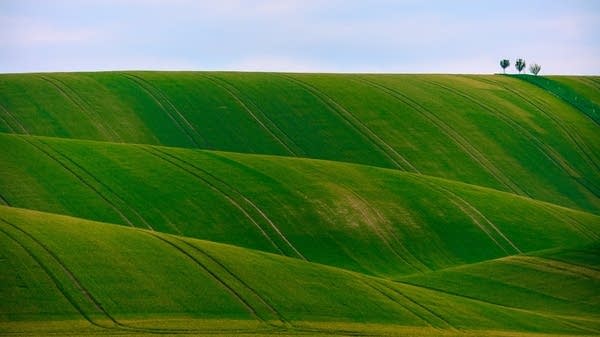
Give yourself some 'Breathing Room' with classical host Elena See's playlist
When life is hectic or you need a break from the news, feel better and live bigger with classical music. This week, classical host Elena See shares music to help give us all some 'Breathing Room.'

Celebrate the outdoors with our summer classical music playlist
We have curated classical music playlists on YouTube to suit your everyday needs and interests, including music perfect for a barbecue, picnic or any outdoor gathering. You provide the fun. We'll provide the summer soundtrack.

Hear the music you love via Classical MPR's YouTube playlists
Classical MPR has curated playlists on YouTube to suit your everyday needs, including exercising, putting the kids to bed, or simply relaxing. Just click the play button, and let us provide the soundtrack for your many moods and routines. Here's what's available.

Try our guided muscle relaxation with classical music
Guided progressive muscle relaxation is an exercise that helps improve awareness in your body by consciously tightening and relaxing muscles from head to toe. Use our audio or video to be guided through the process while working on calm breathing and focusing your thoughts on your muscles and how they feel, all while enjoying classical music.
We can help you find classical music you'll love
- Take a 2 minute quiz to share your taste
- We'll recommend YourClassical programming just for you
- Discover the power and joy of classical music

33 episodes
Welcome to Journey Through Classical Piano, the podcast dedicated to helping people of all musical tastes and backgrounds discover the beauty of classical music. This bi-weekly podcast features concert-like musical experiences and in-depth exploration of classical compositions. Your host, classical pianist Jeeyoon Kim, brings the splendor of the classical music experience right to your living room or on the go in 15-minute segments. Let’s embark in the journey together!
Journey through Classical Piano Jeeyoon Kim
- 4.9 • 63 Ratings
- JAN 27, 2021
Chaconne in G major, HWV 435, by George Fredeiric Handel
🎁 The FREE online course: “The Secrets of How to Memorize Music” Subscribe to my newsletter and be my friend! I write a bi-weekly newsletter called Behind The Keys about my insights behind the scenes of the life of a classical pianist, my favorite music, and wisdom from books I read during those weeks. As an ardent student of life, I am humbled yet excited to share my journey with you. To sign up ➡️ Click HERETo leave a voice or a written comment, please go to Jeeyoon's Webs...
- FEB 11, 2021
Chopin Ballade No. 4 in F minor, Op. 52
- AUG 11, 2023
Kapustin: Eight Concert Etudes Op. 40, No. 6,'Pastoral'
- NOV 17, 2023
'Je te veux' by Erik Satie
- DEC 29, 2023
"Vocalise", Op. 34, No. 14, Sergei Rachmaninoff
🎁 The FREE online course: “The Secrets of How to Memorize Music”Subscribe to my newsletter and be my friend! I write a bi-weekly newsletter called Behind The Keys about my insights behind the scenes of the life of a classical pianist, my favorite music, and wisdom from books I read during those weeks. As an ardent student of life, I am humbled yet excited to share my journey with you. To sign up ➡️ Click HERETo leave a voice or a written comment, please go to Jeeyoon's Websi...
- FEB 23, 2024
La plus que lent by Debussy
- © 2024 Journey through Classical Piano
Customer Reviews
A gift to us all.
This podcast is such a delight. As someone who played piano for many years in my youth and generally loved classical music, I am so thankful to have found this! Jeeyoon weaves history, technical components, passion, and imagination into easily digestible, bite-sized offerings of some of the most complex and consequential classical piano masterpieces. I often listen to music and feel like there is so much more to be appreciated behind what is offered from the melody alone, and have been hoping someone would do a podcast to speak more about context, such as the composer, backstory, cultural significance, etc. I searched and let me just say, Jeeyoon delivered! Not to mention, her voice and energy is so calming and lovely. I just purchased her book on Audible. Thank you for this podcast, Jeeyoon!
Excellent piano podcast
I’ve only just discovered this podcast. I’ve been taking piano lessons for one year (age 39) and this has just been a joy to experience. I love learning about famous composers and how the music is arranged in this nice bite size episodes.
Feeds my soul!
I could listen to Jeeyoon speak and play all day. She is such a talented communicator. I wish I would have started listening sooner. Her calming presence is exactly what we need more of in this life.
Top Podcasts In Music
Journey Essentials
This San Francisco band refined the power ballad and shot the concept into hyperspace. It's easy to see why “Don't Stop Believin'” and “Open Arms,” from their triumphant 1981 album, Escape, are staples of both high-school dances and sports teams: With sweeping piano, towering guitar, and Steve Perry's gravity-defying vocals, they're at once cries from the heart and rallying calls to the faithful. Journey get more gritty on gems like “Lights” and “Lovin', Touchin', Squeezin',” letting their blues-rock roots show through with edgy riffing, throbbing rhythms, and Perry's untethered wail.
25 Songs, 1 hour, 43 minutes
Featured Artist
Africa, middle east, and india.
- Côte d’Ivoire
- Congo, The Democratic Republic Of The
- Guinea-Bissau
- Niger (English)
- Congo, Republic of
- Saudi Arabia
- Sierra Leone
- South Africa
- Tanzania, United Republic Of
- Turkmenistan
- United Arab Emirates
Asia Pacific
- Indonesia (English)
- Lao People's Democratic Republic
- Malaysia (English)
- Micronesia, Federated States of
- New Zealand
- Papua New Guinea
- Philippines
- Solomon Islands
- Bosnia and Herzegovina
- France (Français)
- Deutschland
- Luxembourg (English)
- Moldova, Republic Of
- North Macedonia
- Portugal (Português)
- Türkiye (English)
- United Kingdom
Latin America and the Caribbean
- Antigua and Barbuda
- Argentina (Español)
- Bolivia (Español)
- Virgin Islands, British
- Cayman Islands
- Chile (Español)
- Colombia (Español)
- Costa Rica (Español)
- República Dominicana
- Ecuador (Español)
- El Salvador (Español)
- Guatemala (Español)
- Honduras (Español)
- Nicaragua (Español)
- Paraguay (Español)
- St. Kitts and Nevis
- Saint Lucia
- St. Vincent and The Grenadines
- Trinidad and Tobago
- Turks and Caicos
- Uruguay (English)
- Venezuela (Español)
The United States and Canada
- Canada (English)
- Canada (Français)
- United States
- Estados Unidos (Español México)
- الولايات المتحدة
- États-Unis (Français France)
- Estados Unidos (Português Brasil)
- 美國 (繁體中文台灣)

A Journey Through Great Music
Do you think it’s difficult to get started with listening to great classical music? Yes, there are almost endless choices of where to start and things to learn that would put the music in some perspective.
This course will help you begin. It’s not hard.
Circle of Scholars members may access the course here.
And you will enjoy the journey as you proceed at your own pace. No tests, no pressure, just great listening experiences.
We do encourage you to listen closely and even to take notes. And we will give you some commentary along the way.
The course is available exclusively to members of the Circle of Scholars.
Comes with All of These Courses Online for Just $15/mo.
Begin your journey through classical music.
Here are the latest Performance Picks , and we keep adding more. Should you go through all of them? Of course. But how much time do you have? And where should you start? Let Journey Through Great Music be your guide.
Friday Performance Pick – 469
Varèse, Ionisation Edgard Varèse (1883-1965) was born in Paris. He moved to America in 1915 and spent most of his professional life here. He studied music at the Schola Cantorum and the Paris Conservatory. He also spent a good deal of time studying engineering in
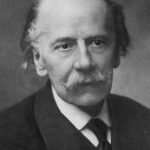
Friday Performance Pick – 468
Massenet, Méditation The Belle Époque describes a peaceful and prosperous era between two catastrophic European wars: the end of the Franco-Prussian War in 1871 and the onset of World War I in 1914. Major advances in science and technology were accompanied by a flourishing of
Explanations • Context • Comparisons
If every journey starts with a single step, as the cliché says, let’s begin this Listening Journey with a selection of seven pieces that present much richness and variety.
We’ve designed this course to guide you through a selection of pieces that are significant, vivid, and enjoyable. These compositions will serve as musical highways, leading to other pieces that will deepen and extend your experience.
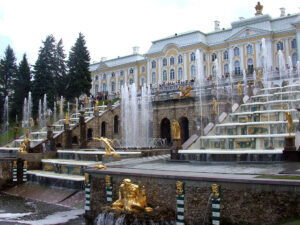
If you look at the decorations in any palace of the era, you’ll find overwhelming displays of gold-leafed ornamentation, musical flourishes that are not necessary to carry the overall line of the melody (e.g. trills and grace notes), but which are added for interest frequently through improvisation, rows of sparkling chandeliers, floors almost dizzying with the designs of their geometrically elaborate inlaid floors (parquet), and gardens manicured in symmetrical patterns with technologically sophisticated fountains.
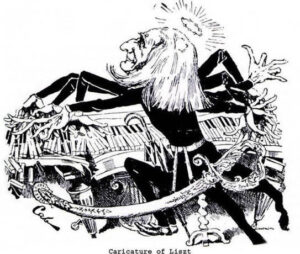
The vocal selections chosen for this stage of our course allow you to experience the dynamic connection between singer and song. In each case, you will hear singers infusing famous songs with the qualities of their individual musical gifts, shaping the songs poignantly and powerfully.
Image: Manet, Spanish Singer
Within the classical world, the term “chamber music” describes music-making in small groups. We categorize both the works and the compositions as duos, trios, quartets, quintets, all the way to nonets, after which point the term “ensemble” works best. Over time, trios and quartets have dominated in the string world, while wind players are likely to find themselves drawn to the combined sound of more players (quintets, septets, and octets).
Gabbiani, Portrait of Three Musicians of the Medici Court (c. 1687)
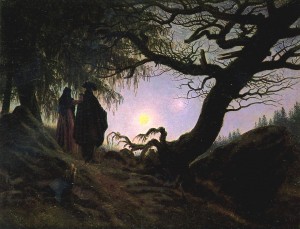
The term “Romanticism” has multiple meanings. In music, though, it refers to an artistic and cultural atmosphere that prevailed throughout the 19th century and affected everything from poetry and painting to fashion and horticultural design. Causes for “Romanticism” include the turmoil and question of values brought about by the Napoleonic era, the rapid changes in technology and science, and the desire of artists to explore new territory.
Caspar David Friedrich, Man and Woman Contemplating the Moon
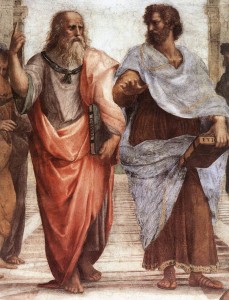
Human beings find satisfaction in clear, perceptible forms and structures. And they like to return periodically to such principles, particularly when their own contemporary styles have veered away from clarity of form and mathematical structures. People also seek and appreciate the continued relevance of almost any well-formulated creative expression, whether it be in music and the arts or in another area like fashion, design, and cuisine. So, we can expect the term “classical” to be with us a long time.
Raphael, School of Athens (detail)
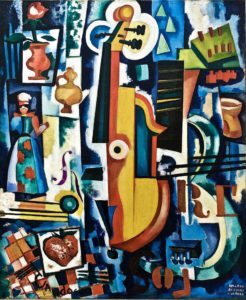
Image: Amadeo de Souza-Cardoso (c. 1916), Pedro Ribeiro Simões (CC BY 2.0)

Courses in Music History and Fine Arts from Carol Reynolds, Ph.D.
“Professor Carol” enjoys an international reputation for teaching music history and fine arts. After years as a tenured professor at Southern Methodist University in Dallas, Carol now travels across Europe as an expert for Smithsonian Journeys.
Her husband, Hank, also has his Ph.D. in music. Hank is responsible for writing the majority of the Friday Performance Picks on which this course is based.
Carol and Hank work closely and appear jointly with their colleagues in the Classical Education movement: Memoria Press , CiRCE Institute , Classical Academic Press , and the Institute for Classical Education . Read more .
All of These Courses Online for Just $15/mo.
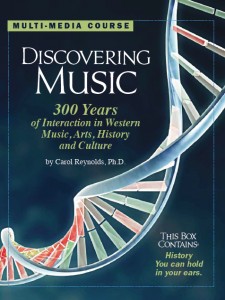

Insert/edit link
Enter the destination URL
Or link to existing content
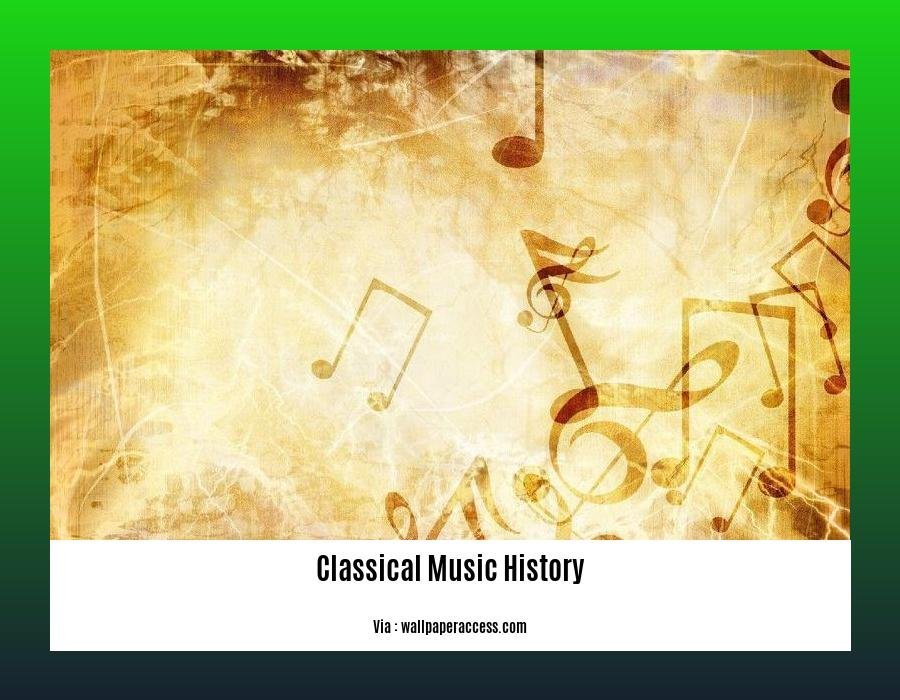
Unveiling the Masterpieces: A Journey Through Classical Music History
Step into the grand concert halls of history and embark on an enthralling journey through classical music’s rich tapestry. From the origins of Gregorian chant to the virtuosity of the Romantic era, “Unveiling the Masterpieces: A Journey Through Classical Music History” paints a vivid portrait of the evolution of musical forms and the lives of the geniuses who shaped them. Discover the stories behind iconic compositions, the innovations that transformed instruments, and the cultural forces that influenced the classical music landscape. Prepare to be mesmerized as we unravel the secrets of classical masterpieces and trace the fascinating paths that led to their creation.
Key Takeaways:
Classical music is the art music of the Western world, known for its formality, complexity, and harmonic organization.
The tradition begins in the 9th century with music created for the early Christian Church.
It’s primarily a written tradition, using a sophisticated notation system and analytical literature.
Composers’ compositions, personalities, and beliefs have shaped the history of classical music.
Early medieval music was religious, monophonic, and vocal, influenced by ancient Greek and Roman music.
Surviving early medieval music is primarily religious in nature.
Table of Contents
Classical Music History: A Journey Through Sound
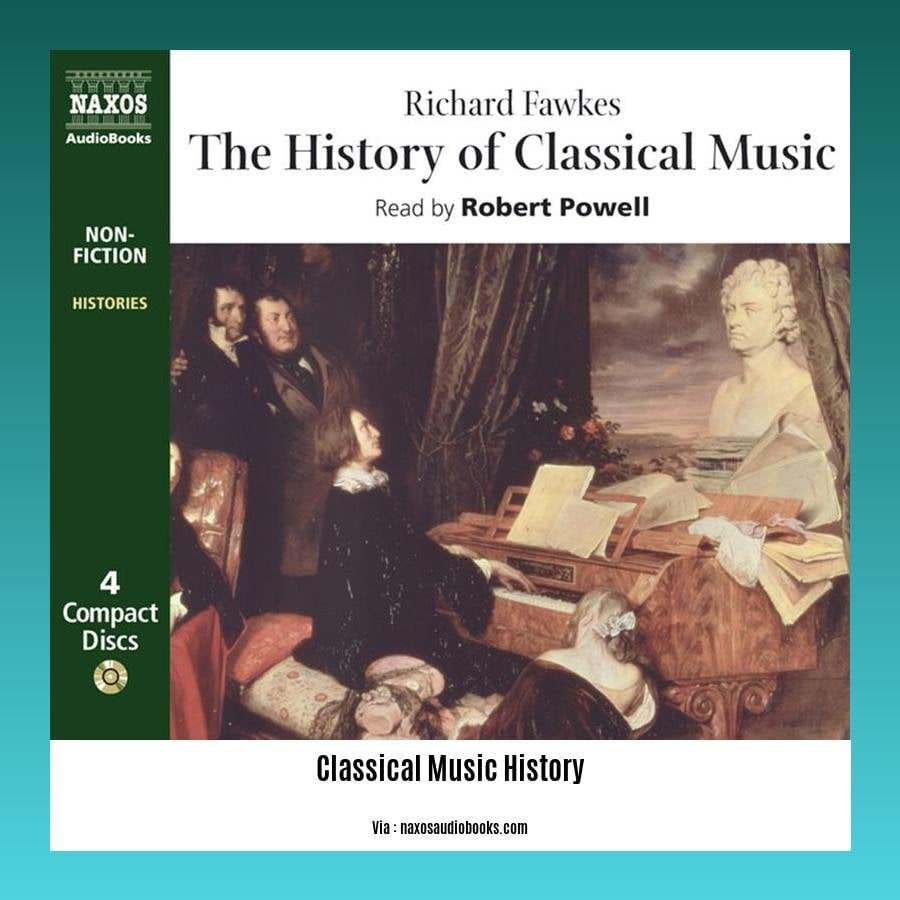
Throughout history, classical music has showcased mankind’s creative genius. From the serene hymns of early medieval times to the complex compositions of the Romantic era, the classical music journey is a captivating saga. Let’s delve into the evolution of this art form and experience its transformative power.
The Evolving Landscape of Classical Music History
- Medieval Era (500-1400 AD):
- Monophonic chants and religious works dominated this period.
Gregorian chant, a cornerstone of medieval music, showcased the power of sacred melodies.
Renaissance Era (1400-1600 AD):
- Polyphony, with multiple melodies interwoven, emerged as a defining characteristic.
Composers like Palestrina and Lassus crafted intricate vocal works that showcased their mastery of counterpoint.
Baroque Era (1600-1750 AD):
- The rise of instrumental music, including concertos and sonatas.
Johann Sebastian Bach, a towering figure, left an indelible mark with his intricate fugues and cantatas.
Classical Era (1750-1820 AD):
- A focus on balance, clarity, and proportion characterized this era.
Composers like Mozart and Haydn created graceful symphonies and elegant concertos that exemplified the classical style.
Romantic Era (1820-1900 AD):
- Emotions, individualism, and dramatic expression took center stage.
- Beethoven, a revolutionary, challenged conventions with his passionate symphonies and sonatas.
- Romantic composers like Tchaikovsky and Brahms explored the depths of human experience through their music.
Exploring the Masterpieces of Classical Music History
- Bach’s “Brandenburg Concertos”:
A set of six concertos showcasing Bach’s genius in blending multiple instruments and creating intricate contrapuntal textures.
Beethoven’s “Symphony No. 9”:
A monumental work featuring a choral finale with Schiller’s “Ode to Joy,” representing the triumph of the human spirit.
Mozart’s “The Marriage of Figaro”:
A beloved opera that combines beautiful melodies, witty dialogue, and a captivating storyline, showcasing Mozart’s mastery of the genre.
Tchaikovsky’s “Swan Lake”:
- A captivating ballet score that evokes a world of enchantment and tragedy, characterized by its sweeping melodies and lush orchestration.
Classical Music’s Enduring Legacy
Classical music has stood the test of time, captivating audiences across generations. Its ability to express the human experience, evoke emotions, and transport listeners to different worlds makes it a timeless art form.
Whether you’re a seasoned aficionado or a newcomer to this enchanting world, the classical music journey offers something for everyone. So, let the melodies of the past resonate in your soul and immerse yourself in the rich tapestry of classical music history .
Thought-Provoking Questions:
Imagine a world without classical music . What would our cultural landscape look like?
Which era of classical music resonates with you the most? Why do you think that is?
What challenges do you think contemporary classical music composers face in creating works that are both innovative and true to tradition?
Learn the fascinating story of how chocolate, a gift from the ancient Mayans, evolved into the delectable treat we savor today.
German Shorthaired Pointer, a breed with a rich history dating back to the 19th century, was initially developed as a versatile hunting companion. Discover their captivating journey.
**Classical Period Instruments: A Symphony of Innovation**
Innovation flourished in the classical period (1750-1820) , giving birth to a diverse array of instruments that forever shaped the landscape of classical music. In this era of exploration, composers sought to expand their sonic palette, pushing the boundaries of musical expression. Let’s embark on a journey to discover the masterpieces of this period and the instrumental marvels that brought them to life.
- Innovations in Classical period instruments laid the foundation for the modern orchestra.
- The addition of woodwinds and brass instruments expanded the range and expressiveness of orchestration.
- String instruments, such as the violin, viola, and cello , continued to refine their design and techniques.
- Keyboard instruments, like the harpsichord and fortepiano , evolved to meet the demands of classical music’s intricate compositions.
- Smaller percussion instruments, such as the tambourine, triangle, and bells , added delicate accents and rhythmic drive.
Orchestral Expansion:
- Woodwind instruments , including the flute, oboe, clarinet, and bassoon , gained prominence, providing new colors and textures to the orchestra.
- Brass instruments like the trumpet, horn, and trombone added depth and brilliance, enhancing the power and majesty of the ensemble.
String Innovations:
- String instruments , the backbone of the orchestra, underwent modifications to improve their resonance and playability.
- The violin’s design was refined, resulting in a more focused and brilliant tone.
- The viola and cello received adjustments to enhance their lower registers, adding warmth and richness to the ensemble.
Keyboard Evolution:
- Keyboard instruments played a crucial role in classical music, providing harmonic support and soloistic brilliance.
- The harpsichord remained popular, with its bright, plucked sound adding clarity and rhythmic precision.
- The fortepiano , a precursor to the modern piano, emerged as a versatile instrument capable of expressing a wide range of dynamics and emotions.
Percussive Accents:
- Smaller percussion instruments , such as the tambourine, triangle, and bells , added delicate accents and rhythmic drive to orchestral compositions.
- Drums , including the timpani and snare drum , provided a solid foundation and dramatic punctuation.
**Citations:**
- Musicnotes.com
- hellomusictheory.com
Q1: What are the origins of classical music?
A1: Classical music, with its roots in the early Christian Church, traces its beginnings to the 9th century. Initially characterized by religious, monophonic, and vocal music, it was influenced by ancient Greek and Roman musical traditions.
Q2: Who are some of the renowned composers associated with classical music?
A2: Classical music is adorned with the contributions of numerous celebrated composers whose compositions, personalities, and beliefs have shaped its history. This includes influential figures like J.S. Bach, Wolfgang Amadeus Mozart, Ludwig van Beethoven, Frédéric Chopin, and many more.
Q3: What instruments were commonly used during the classical period?
A3: The classical period (1750-1820) witnessed significant advancements in instrumentation. Notable instruments included early brass instruments like the slide trumpet and valveless trumpet, adapted string instruments like the viol and lute, keyboard instruments like the harpsichord, small percussion instruments, and early woodwind instruments like the transverse flute and recorder.
Q4: What are some of the characteristics of classical music?
A4: Classical music is distinguished by its formality, showcasing complexity in musical form and harmonic organization. It has been primarily a written tradition, utilizing a sophisticated notational system and accompanied by analytical, critical, and historiographical literature.
Q5: What are some of the key events that shaped the evolution of classical music?
A5: The evolution of classical music has been marked by several pivotal events. The transition from monophonic to polyphonic music, the development of new musical forms such as the sonata and symphony, and the rise of opera as a significant genre are among the notable milestones that shaped its history.
Recent Posts
- A Comprehensive Journey Through the History of Ukraine - May 21, 2024
- The Journey of Ukrainian Independence: A Decade-Long Perspective - May 21, 2024
- Unveiling the Tapestry of Kievan Rus: A Journey into the Heart of Slavic Medieval Society - May 21, 2024
Related Posts:
- Unraveling the Enigma: Ancient Greek Musical…
- The Evolution of Melodies: A Journey Through the…
- The Enchanting Melodies: Exploring Greek Instruments…
- Unveiling the Tapestry of Sound: A Brief History of…
- Unveiling the Names: Explore Ancient Greek Musical…
- The History of Classical Music: A Journey Through…

A Comprehensive Journey Through the History of Ukraine

The Journey of Ukrainian Independence: A Decade-Long Perspective

Unveiling the Tapestry of Kievan Rus: A Journey into the Heart of Slavic Medieval Society
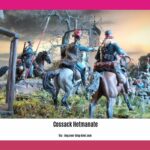
Title: The Cossack Hetmanate: A Comprehensive Exploration of Its History and Significance

The Secrets of Political Leaders Loved by the Common People
The Enduring Influence of Political Icons Among the Populace: A Decade-Long Analysis

Unveiling the Enigmatic Qualities of Leaders Adored by the Masses
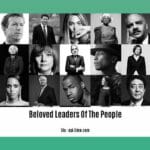
Beloved Leaders of the People: Inspiring Examples of Compassion and Transformational Leadership

The Scholarly Geniuses of Military Philosophy: Illuminating Enduring Insights from Antiquity to Modern Times

Military Commanders of Incredible Intellect: Lessons from History for Strategic Success
Privacy Policy
Alexander Armstrong 10am - 1pm
Now Playing
The Nutcracker - March Peter Ilich Tchaikovsky Download 'The Nutcracker - March' on iTunes
7 pieces of classical music inspired by walking
12 July 2019, 11:00 | Updated: 16 July 2019, 15:59
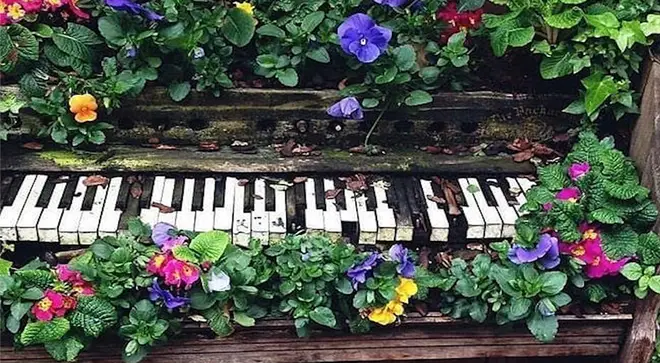
By Helena Asprou

From sweet-sounding duets to magnificent concertos, here are seven classical works inspired by hilly hikes and leisurely strolls.
1. The Hebrides ( Fingal’s Cave), Mendelssohn
Composed in 1830, this spectacular tone poem written by Felix Mendelssohn was inspired by his travels to the British Isles – particularly the island of Staffa on Scotland’s west coast, which is home to Fingal’s Cave. Written in B minor and originally titled Die einsame Insel (The Lonely Island), the concert overture is intended to set a scene for the cave’s unusual echoes. It consists of two main themes – the opening notes are initially played only by the violas , cellos and bassoons , suggesting solitude, while the second theme depicts the sea.

Mendelssohn - Hebrides Overture (Fingal's Cave) (Abbado)
2. Seven Days Walking , Einaudi
Earlier this year, Italian pianist and composer Ludovico Einaudi unveiled his ambitious plan to release seven albums in seven months. He was inspired to create the collection, titled Seven Days Walking , after a walk in the Alps. It's signature Einaudi in terms of sound, and each selection of pieces portrays a different aspect of his wintery wander. Dreamy moments like a reflection of the moon on snow, and tracks left behind in the snow by foxes, are imagined in the music.

Ludovico Einaudi - Seven Days Walking: Day 1 A432Hz
3. In the Hall of the Mountain King , Grieg
This orchestral masterpiece was penned in 1875 by Edvard Grieg as incidental music for Henrik Ibsen’s 1867 fantasy play, Peer Gynt . Enduringly popular, its stomping main theme – played by cellos, double basses and bassoons – is instantly recognisable and tells the story of the play’s lead character, Peer Gynt, as he sets foot in the mountain troll’s hall. Written in the key of B minor, this epic piece builds tension by starting in a slow tempo and gradually speeds up to a prestissimo finale.

In the Hall of the Mountain King - Kevin MacLeod [Edvard Grieg] 2 HOURS
4. Beethoven’s ‘Pastoral’ Symphony
A self-confessed nature fan and lover of trees, Ludwig van Beethoven liked to go walking almost daily – and many of his best ideas came to him during walks in the country, including his 'pastoral' Symphony No. 6 . Completed in 1808, its five movements contain programmatic content intended to depict the rural surroundings Beethoven encountered on his walks – including a scene by a brook and a merry gathering of locals.

(FULL) Beethoven Symphony No.6 "Pastorale" And Egmont Overture Op.68 - London Philarmonic Orchestra
5. ‘The Lark Ascending’, Vaughan Williams
This mesmerising piece of music was inspired by George Meredith’s poem of the same name about a skylark taking flight, and its song that could be heard during Meredith’s frequent strolls. Although Vaughan Williams wrote his first musical adaptation of the work in 1914 for violin and piano , he re-scored it in 1920 for solo violin and orchestra. This second version has become a classical music favourite and was voted No. 1 in this year’s Classic FM Hall of Fame .

Vaughan Williams ~ The Lark Ascending
6. Vivaldi’s The Four Seasons
Written in 1723, this majestic concerto is surely one of Antonio Vivaldi ’s most famous programmatic works and each of its four movements corresponds to a different season. The Baroque composer liked to observe his surroundings while walking and translated this into beautiful music – highlights in The Four Seasons include high-pitched plucking from the strings to depict icy rain, while violas portray a barking dog in ‘Spring’.

Four Seasons ~ Vivaldi
7. Delibes’ Flower Duet (from Lakmé)
Premiering in Paris in 1883, this gorgeous duet for soprano and mezzo-soprano is taken from Léo Delibes ’ stunning three-part opera, Lakmé. The duet takes place in act one as lead character, Lakmé, and her servant, Mallika, wander through the great outdoors and gather flowers by a river.

Flower duet - Anna Netrebko & Elina Garanca (Lakmé de Delibes)
Love walking and helping others? This September Classic FM’s Big Walk is raising money for our charity, Global’s Make Some Noise . We're all getting out and walking to raise money, and would love for you to join us.
Visit bigwalk.classicfm.com to find out more and enter.
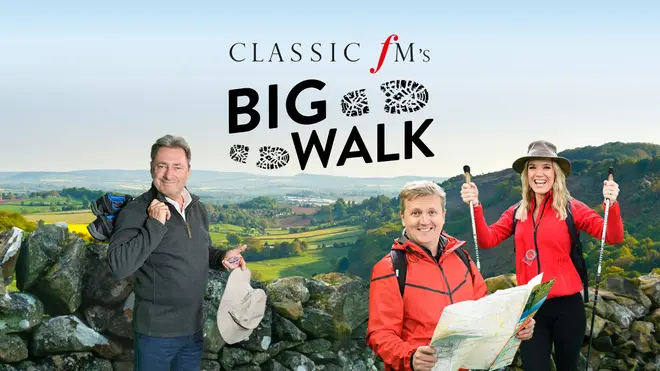
Latest on Classic FM
Survey finds over 70% of brits turn to classical music for life’s biggest moments, all the classical covers in netflix’s bridgerton season 3 revealed.
Discover Music
Countertenor delivers ‘spellbinding’ Baroque vocal, securing his place in The Piano final
What’s the difference between a symphony, a concerto, and a sonata, what classical music does francesca play on piano in bridgerton, what is norway’s national anthem, and what are the lyrics in english, jeneba kanneh-mason stuns with blistering take on liszt’s hungarian rhapsody no.2, unearthed footage of 15-year-old joshua bell playing tchaikovsky is terrifyingly good.
Joshua Bell
How Kris Bowers created ‘the Bridgerton sound’ – from hip-hop beats to Ravel inspiration
The 10 best pieces of music ever written for the organ, best classical music.
See more Best classical music
The 15 most famous tunes in classical music
The 15 greatest symphonies of all time, the 4 eras of classical music: a quick guide, the 25 greatest conductors of all time, 30 of the greatest classical music composers of all time, the 25 best pianists of all time, classic fm live playlists.
See more Classic FM Live Playlists
Classical Summertime
Classic fm hall of fame, classic fm relax, classic fm revision, classic fm movie music hall of fame, classic fm video game music, latest news.
See more Latest news
Classic FM partners with Wigmore Hall to offer £5 tickets to under-35 audiences
Lang lang surprises 10-year-old superfan on the piano after sparkling haydn solo, blind couple’s awe-inspiring ‘climb ev’ry mountain’ moves britain’s got talent judge to tears, orchestra expertly pranks sir karl jenkins with surprise ‘happy birthday’ at royal albert hall, apple apologises for piano-crushing advert – after brilliant bach parody, why are piano keys black and white and when did they change, latest videos.
See more Latest videos
Michelle Obama reveals piano skills in playful ‘Charlie Brown’ duet with Jon Batiste
11 days ago
Ultra-realistic image of Beethoven created by visual artist using composer’s own life mask
18 days ago
Monumental sound as 10,000-strong Japanese megachoir sings Beethoven’s ‘Ode to Joy’
19 days ago
80-year-old pianist with dementia moves ‘The Piano’ viewers with beautiful love theme for his wife
21 days ago
A phone rang during Hayato Sumino’s pin-drop Royal Albert Hall solo – and he duetted with it...
25 days ago
‘By far, the best opera singer we’ve ever had’ – Innocent Masuku astonishes Britain’s Got Talent judges
26 days ago

- The Bard and The Bees
0 comments
The Ultimate Beginner’s Guide to Classical Music
If you’re anything like I was, you probably have no idea where to start with classical music.
I spent nights Googling variations of “classical music for beginners” and doing tons of reading in order to better understand the topic myself.
Since then, I've learned a lot about classical music. I even took a Yale University course to deepen my understanding of it!
Trust me, I know what it feels like to not know where to start with classical music. As such, I want to help others who might feel as lost as I did.
That's why I consolidated everything I learned into this ultimate beginner's guide.
Here you'll get a simple and streamlined introduction to classical music. You'll learn about the main three eras of western art music, and what makes them unique.
At the end of each section, you'll even get a list of the best pieces from each era, so you can start listening right away.
My goal for this article is to help you enrich your basic understanding of classical music so you're able to enjoy and appreciate it more.
I know that for me, getting into classical music has been a life-changing experience. I truly believe it can be the same for you.
Now without any further ado, let’s get started!
What Is Classical Music?
When you or I say “classical music,” we typically think of fancy sounding music from 17th-19th century Europe. Images of Bach, Beethoven, and Mozart most likely come to mind.
However, the term “classical music” is in itself a bit deceiving, because it doesn’t always mean what we think it does.
What we usually refer to when we say “classical music” is actually something more accurately termed “western art music.”
That’s the pretentious-sounding technical term used to cover all of the following periods of music:
- The Medieval & Renaissance Eras
- The Baroque Era
- The Classical Era (now you know why the term is deceiving!)
- The Romantic Era
- The Modern and Contemporary Eras
Remember, this is classical music for beginners - as such, we're keeping it simple.
For this introduction to classical music, we’re only going to cover the middle three time periods listed above. The Baroque, Classical, and Romantic periods compose the vast majority of what people mean by the term “classical music.”
Which, just to remind you, is more accurately called “western art music.” Whether you decide to use that term in public or not is up to you...
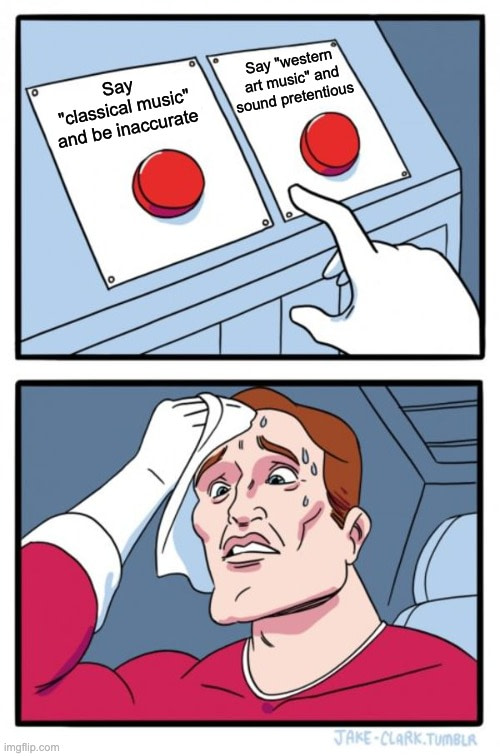
Understanding Classical Music Titles
Classical music titles might seem confusing at first, but they're actually fairly simple once you know the basics.
I wrote an article that goes in-depth on classical music naming conventions. It's a "classical music titles for dummies" type article.
I would've loved a resource like this when I was starting out, but I couldn't find one. That's why I decided to write the article myself, so you don't have to put up with what I did!
Click here to check it out. It contains everything you need to know!
What Is Baroque Music? The Baroque Period Explained
The Baroque period (1600-1750) came off the heels of the Renaissance and helped bring music into its own.
Instruments like the violin and fortepiano (a predecessor to our pianos today) became standardized, musical form and style evolved, and opera grew in prestige and popularity.
Additionally, the modal forms of the Renaissance gave way to tonal forms in the Baroque era.
This is Baroque music for beginners, so all you need to know about the shift from modal to tonal music is that tonal music made it much easier to form concrete chords and harmonies, within a specific musical key.
This allowed Baroque composers (and all composers thereafter) to write music in a more logical and straightforward way.
Here’s a fun fact: Since Baroque music is quite technical and mathematic, it's best enjoyed in the morning. This is because our brains actually change the way they interpret and process information throughout the day.
For most of us, our brains think most algorithmically in the morning, so that’s when they’re best prepared to process the complexity of Baroque music.
Try listening to some Vivaldi as you make your morning cup of coffee, and see how you enjoy it!
Baroque Period Style
The Baroque period is defined by its technically demanding compositions, and specifically the use of counterpoint .
In non-technical jargon, counterpoint is when two or more melodies are played simultaneous in an intertwining fashion.
Here’s an example of what that looks like:
Counterpoint Example:
In addition to counterpoint, basso continuo (essentially a continuous bass line) is another element that defined Baroque music.
Want a good rule of thumb for determining if something is Baroque?
If it sounds technical, mathematical, and has multiple melody lines competing for attention, it’s probably Baroque.
If that doesn’t make sense yet, don’t worry: this concept will become more clear once you compare music of the Baroque era to music of the Classical and Romantic eras.
Baroque Composers and Examples of Baroque Music
The main Baroque composers for beginners to get familiar with are Johann Sebastian Bach, George Frideric Handel, and Antonio Vivaldi.
Handel wrote Messiah , Vivaldi wrote The Four Seasons , and Bach wrote everything else (just kidding! well, sort of…)
You know more Baroque music than you think! Below are three compositions I guarantee you’re familiar with.
Handel - Hallelujah Chorus:
Listen for the use of counterpoint in this composition - it’s everywhere, especially in the first 30 seconds.
The first seven seconds of the piece feature counterpoint between two different string melodies. Once the vocals come in, the higher pitched strings can be heard trying to get noticed in between the vocal sections.
This is a great example of a stereotypical Baroque composition.
Vivaldi - The Four Seasons, Spring In E Major, RV. 269: I. Allegro:
Do you hear the bass line chugging away in the intro? That’s a great example of basso continuo, and it was guaranteed to make you “shake thine booty” back in the day.
Around 1:40 you’ll notice the piece takes a turn, and you have a great example of how intense some Baroque music could get.
After some playful counterpoint, the main violinist starts to shred, and that’s where the incredible technicality and precision of Baroque music shines through. The intensity of the individual performance makes the return to form at 2:06 so much more beautiful.
Lastly, you might notice there’s no conductor. This makes the performance more authentic, since baroque orchestras at the time didn’t have conductors in the same way we have them today.
The first violinist guides the other performers, so his job is even more complicated than it might look - and it already looks complicated!
Bach - Cello Suite No. 1in G Major, BMV 1007: I. Prélude:
This performance is stripped down because it’s just one instrument, but it’s still quintessentially baroque.
It’s the prelude to Bach’s first cello suite, the one in the key of G Major. As such, he appropriately named it “Cello Suite No. 1 in G Major.”
We can safely assume Bach’s creativity went towards creating the music itself, not the titles…
This composition proves that not all Baroque music features shredding violin solos like the ones Vivaldi wrote. Baroque music covers the upbeat and intense, as well as the dark and brooding.
For links of what to explore next, check to the recommendations below.
Further Listening - Baroque Period
I wrote an entire article on the top 7 pieces of the Baroque period . If you want to explore more Baroque music, this is the article for you!
More Resources:
Here are some videos to enhance your understanding of Baroque music and the Baroque era in general:
- What Is Counter Point?
- The Baroque Period | Music History Video Lesson - YouTube
- Piano TV - Baroque Period Music
What is Classical Music? The Classical Period Explained
During the Classical period (roughly 1750-1820), traditional practices were codified and new forms of musical composition were developed.
Most notably, a focus on melody defined the classical period and distinguished it from the complicated counterpoint of the Baroque era. This emphasis on melody resulted in tuneful and memorable compositions.
The development of the piano played a huge role in the achievements of the Classical era, since it gave composers the ability to express emotion in a more nuanced and dynamic fashion.
Additionally, the size of the orchestra grew and began to incorporate a variety of new instruments.
The combination of these two factors contributed to many of the musical advancements made by Classical era composers.
Simplicity, balance, singable melodies, and emotional depth are the four main elements that define the Classical period.
The combination of these elements produced a beautiful period of artistic expression and hundreds of compositions that remain just as brilliant over 200 years later.
Classical Period Style:
As mentioned above, the Classical period’s emphasis on melody and chordal harmonic progression was a large departure from the contrapuntal lines of the Baroque era.
Homophony , or a single melody over an underlying chord progression, became the standard for classical music. In fact, it’s also the standard for how most contemporary music is produced today!
Another break from the Baroque era occurred in the realm of emotion: whereas Baroque compositions typically expressed one emotional extreme, Classical era pieces took listeners on more nuanced and complex emotional journeys.
Emotion still remained secondary to form, however, and musical structures like the sonata form, binary form, and ternary form developed as ways of conveying this emotional journey in a predictable and orderly fashion.
The evolution of the piano is largely responsible for many of these developments. The Classical era saw the piano grow closer to the instrument we know today, and its design allowed performers the ability to plays notes both tenderly and fiercely.
The art of musical composition matured as Classical era composers wrote pieces that expressed the nuanced emotional highs and lows of the human experience.
Classical Composers and Examples of Classical Music
You already know several big wigs of the Classical period! Think Ludwig van Beethoven, Wolfgang Amadeus Mozart, and Joseph Haydn.
Below are three examples of classical era music I’m sure you’re familiar with:
Mozart - Eine Kleine Nachtmusik:
You’ll recognize this one within seconds. Notice how the melody plays clearly on top of the accompanying strings - very typical of the classical period.
This composition is broken into four main movements, or different sections, with a slightly different tone in each.
Listening through these four movements takes you on an emotionally complex journey, probably deeper than what you would experience with Baroque music.
The simplicity, balance, singable melody, and emotional depth of this piece make it a perfect example of music from the classical era!
Beethoven - Ode to Joy:
Crank up the volume to experience this one fully! The melody isn't just memorable, it’s iconic.
Something Beethoven knew better than anyone else was how to harness the power of the human voice - you can’t help but be moved at 0:50 when the choir comes in full blast!
An interesting note about this piece is that it’s been used by people and political movements of every variety.
Ode to Joy almost became a de facto communist anthem in the Soviet Union, but was also played as a joyous celebration of freedom when the Berlin Wall fell.
It was one of the only pieces of Western music endorsed the Maoist Chinese government, but then was used by student protestors in Tiananmen Square.
It’s now the anthem of the European Union.
However you look at it, there’s something powerful about this piece. Something that speaks to us all.
Beethoven - Symphony No. 5:
The four most famous notes in history!
The above video is just an excerpt from the first movement of Beethoven’s 5th Symphony.
Written while he was going deaf, the symphony reflects Beethoven’s struggle with fate - defiance, triumph, and everything in between. It’s a masterpiece that cemented Beethoven’s place as one of the greatest composers of all time.
One fun fact is that the length of the first four notes (short, short, short, long) mirrors how the letter “V” is typed in morse code (dot, dot, dot, dash).
Given the symbolism of “V for Victory,” the BBC used this rhythmic motif to start their broadcasts during World War II.
Further Listening - Classical Period
To further explore Classical period music, this article contains the next best classical songs you should listen to!
Here are some videos to enhance your understanding of Classical period music and the Classical era in general:
- The Classical Period | Music History Video Lesson
- Piano TV - Classical Period Music
What Is Romantic Music? The Romantic Period Explained
The music of the Romantic period (1820-1910) was influenced by the larger Romantic movement in Europe, which focused on emotional experience and elevated the individual.
As such, unique compositions and the expression of emotional intensity were the highlight of Romantic era music .
Romantic era composers broke rules of form, increased dramatic tension, and added new instruments to the orchestra in order to express all the varied highs and lows of emotion.
Musical compositions used recurring melodies or themes (called an idée fixe or leitmotif ) to achieve unity and tie the different movements together.
Overall, emotional intensity was the highlight of Romantic era music .
The intimacy and emotional highs and lows make Romantic period music the most accessible form of classical music to modern listeners.
Whether you want to bask in triumph or lament in heartbreak, the music of the Romantic period is ready to accompany you.
Romantic Period Style
Romantic era music prioritized emotion above all else.
In order to express a wider range of emotional highs and lows, composers expanded the orchestra by adding instruments that could hit both higher and lower pitches.
For example, the piccolo was added to play higher notes, and the contrabassoon to play lower ones. The piano also continued to develop as its range expanded from four octaves to the seven it has today.
Another element composers started using to convey emotion was dissonance .
Dissonance is a lack of harmony among musical notes, and it is often used to create dramatic tension . For an example of dissonance between notes, skip ahead to the 1 minute mark of the video below:
Dissonance Example:
The Romantic period overlapped with the industrial revolution, which impacted its development significantly. The growing middle class now had disposable income to spend on music, and began frequenting concert halls.
As Romantic era music filtered down through the masses, composers and virtuosic performers experienced large amounts of fame and celebrity treatment.
Before there was Beatlemania, there was Lisztomania !
This public attention on composers and performers, in addition to the individualist ideals of romanticism in general, meant that composers tried hard to be unique and push the boundaries of art.
As such, they began writing longer pieces, lengthy introductions, and dramatic codas in order to successfully convey all the emotion and intimacy possible.
As mentioned earlier, composers had to bring unity to their work by incorporating an idée fixe or leitmotif to tie these large compositions together.
In layman’s terms, these are recurring melodies or themes interspersed throughout a piece.
They might be rehashed in different styles or moods, but they remain consistent enough to provide a sense of unity to the work as a whole.
(See the first composition below for an example of an idée fixe )
Romantic Period Composers and Examples of Romantic Music
Wow, where to start?!
Chopin, Liszt, Tchaikovsky, Strauss, Schubert, Wagner, and Rachmaninoff make up just some of the many greats of the Romantic period.
Beethoven even makes the list, despite being predominantly classical. His later works were composed during the beginning of the Romantic era, and he bridged the gap between the Classical and Romantic periods.
My personal favorite composer from the Romantic period is Pyotr Ilyich Tchaikovsky . The man wrote Swan Lake, The Nutcracker, and the 1812 Overture, so he’s hard not to love.
Plus, he’s the only composer I know who incorporated literal CANNONS into one of his pieces , which is a baller move if there ever was one.
Here’s an example of one of his pieces, along with two other Romantic pieces you already know:
Tchaikovsky - Swan Lake:
The main refrain from Swan Lake isn’t just gorgeous; it also provides a perfect example of an idée fixe .
The ballet itself is 2.5 hours long, but the music harkens back to this theme at various points throughout in order to achieve unity.
The basic idée fixe is what you hear in the first minute of the piece. After the first minute, you hear different variations of it.
This theme is rehashed in many shapes and sizes throughout the entirety of Swan Lake, and it provides a sense of unity to the ballet as a whole.
Johann Strauss II - An der shönen blauen Donau (The Blue Danube):
Ah yes, the Space Odyssey song.
This waltz by Johann Strauss II might start soft and take a while to really get going, but good luck getting it out of your head once it does.
A masterpiece of dynamics (soft and loud) and melody, this is the waltz to top all waltzes.
Frédéric Chopin - Nocturne op.9 No.2
Chopin was a master at conveying emotion with the piano.
This is one of his best known pieces, and even science has proved its ability to calm and soothe .
Part of the reason this piece is so soothing is because it doesn't have many long-lasting dissonant intervals.
That means that when there is dissonance, it’s only for a fleeting moment. We're briefly pulled out of comfort, then immediately plunged back in.
Further Listening - Romantic Era
There’s so much great music from the Romantic period! Below are three of the next pieces you should listen to:
- Tchaikovsky, 1812 Overture
- Rachmaninoff, Symphony No. 2
- Wagner, Tannhäuser: Overture
If you want the best of the best, however, check out my article on the top seven Romantic period works !
Here’s a great video that gives more info on both the Romantic movement and the musical developments of the Romantic era:
- The Romantic Period | Music History Video Lesson
Conclusion:
The Baroque, Classical, and Romantic periods make up the majority of what we refer to as “classical music.”
Baroque era music focused on form and technical complexity, Classical era music on simplicity and melody, and Romantic era music on emotional expression.
For most people getting into classical music, the Romantic era is the best place to start .
While there are beautiful pieces from all periods, Romantic era music is most accessible to modern-day listeners thanks to its intensity, passion, and emotional highs and lows.
I truly believe classical music is for everyone - if you haven't found your cup of tea yet, don’t be discouraged! I promise it’s out there.
Hopefully the suggestions given in this guide help steer you in the right direction.
If you found this guide useful, scroll down and join our email list to be updated when we post similar content you’ll find insightful.
I hope this introduction to classical music deepens your appreciation for beauty, and helps you rediscover the joy of great art!
baroque period music, classical music, classical period music, romantic period music
You may also like:
The count of monte cristo: summary and analysis, crime and punishment: summary and analysis, rediscover beauty , truth , and virtue in today's western culture..
For a weekly dose of classic art, music, and more, join my mailing list below. You'll immediately receive my exclusive ebook and gain access to all kinds of insider posts and content.
Don't hesitate, join for free below and begin your journey today!
- Скидки дня
- Справка и помощь
- Адрес доставки Идет загрузка... Ошибка: повторите попытку ОК
- Продажи
- Список отслеживания Развернуть список отслеживаемых товаров Идет загрузка... Войдите в систему , чтобы просмотреть свои сведения о пользователе
- Краткий обзор
- Недавно просмотренные
- Ставки/предложения
- Список отслеживания
- История покупок
- Купить опять
- Объявления о товарах
- Сохраненные запросы поиска
- Сохраненные продавцы
- Сообщения
- Уведомление
- Развернуть корзину Идет загрузка... Произошла ошибка. Чтобы узнать подробнее, посмотрите корзину.

IMAGES
VIDEO
COMMENTS
The history of classical music is a fascinating journey through time, culture, and artistic expression. From the ornate and complex pieces of the Baroque era to the experimental and innovative music of the Modern period. Classical music has evolved and adapted to reflect the changing world. Traditional or modern classical music, there is ...
Classical music you've heard somewhere before.00:04 1. Pachelbel - canon in D (piano)01:51 2. Mozart - serenade No.1308:22 3. Beethoven - symphony No.5 1 mov...
Train music from the first-class compartment. Britten: Night Mail, 1936 In 1936, Britten and the poet WH Auden were commissioned to provide music and text for the GPO documentary Night Mail.
12 January 2024, 14:24. From Mozart to Elgar: the best pieces of classical music for beginners. Picture: Classic FM / Getty / Julia Wesely. By Classic FM. @ClassicFM. From Beethoven's aching solo piano works to Tchaikovsky's swelling ballet themes, here's our guide to the pieces we think are the perfect place to start, on your journey ...
April 25, 2024. The timeless allure of classical music, spanning from the intricate compositions of Bach to the dynamic symphonies of Beethoven, represents an enduring saga of artistic brilliance and emotional depth. This captivating journey through the centuries unveils the sheer elegance and transformative power of a genre that has profoundly ...
The Perfect Sound: A Memoir in Stereo by Garrett Hongo. Garrett Hongo is a renowned poet and essayist, and this memoir shows him to be a person of insatiable curiosity. He is a magnificent writer. Ostensibly about his search for the perfect stereo, this book is Hongo's love affair with music. Starting with the music of his Japanese Hawaiian ...
1. Learn How to Listen Actively to Classical Music. When you read a book actively, you pay close attention to what the author is doing. You note the key points, the climaxes, and the impressive turns of phrase. The best classical musicians and scholars do something similar when listening to classical music.
The Beethoven Journey, Vol. 1 - Classical Music
"Classical Music Journey" is a captivating YouTube channel dedicated to showcasing the timeless beauty and sophistication of classical music. This channel takes its viewers on an enchanting ...
Rautavaara: Harp Concerto; Symphony No. 8 (The Journey) - Classical Music.
Embark on a musical journey through the rich and majestic world of classical music. From breathtaking symphonies to delicate piano compositions, this playlis...
The sight and sound of Alan Stivell's squealing bagpipes in a rock fusion band set off warning bells, but I warmed to this Breton who's taking traditional instruments such as the Celtic harp into new territory. He may be camera-shy, but the camera is also guilty of over-indulging big-name collaborators like Simple Minds's Jim Kerr. There's very decent concert footage, though.
Clark the Caterpillar is our guide through music and emotion in this Class Notes video — part of our standards-based series of fun, short movies about music education. Watch Clark as he navigates Minneapolis to the tunes of Bernard Herrmann, Claude Debussy, Frederic Chopin and Gustav Holst, evoking joy, sadness, fear, and calm along the way.
Connecting to Apple Music. If you don't have iTunes, download it for free. If you have iTunes and it doesn't open automatically, try opening it from your dock or Windows task bar. Welcome to Journey Through Classical Piano, the podcast dedicated to helping people of all musical tastes and backgrounds discover the beauty of classical music ...
Welcome to a historical odyssey through the evolution of classical music—a journey that spans centuries and continents. This genre of music has left an enduring legacy, captivating audiences with its intricate melodies, complex harmonies, and evocative compositions. Key Takeaways: Medieval Period (1150-1400):
Preview. This San Francisco band refined the power ballad and shot the concept into hyperspace. It's easy to see why "Don't Stop Believin'" and "Open Arms," from their triumphant 1981 album, Escape, are staples of both high-school dances and sports teams: With sweeping piano, towering guitar, and Steve Perry's gravity-defying vocals ...
A Journey Through Great Music. We have taken 50 Friday Performance Picks and organized them into a course. The focus is on listening within categories and having just a few important facts at your fingertips. And you will enjoy the journey as you proceed at your own pace. No tests, no pressure, just great listening experiences.
Throughout history, classical music has showcased mankind's creative genius. From the serene hymns of early medieval times to the complex compositions of the Romantic era, the classical music journey is a captivating saga. Let's delve into the evolution of this art form and experience its transformative power.
Great Composers Inspired by Transportation. Gustav Mahler. John Adams. Arthur Honegger. Jan Sandstrom. Maurice Ravel. Jacques Offenbach. Read about these composers' visions of travel in the paragraphs below. All of these pieces are based on forms of transport, including boats, bikes, locomotives, aeroplanes and, of course, feet.
3. In the Hall of the Mountain King, Grieg. This orchestral masterpiece was penned in 1875 by Edvard Grieg as incidental music for Henrik Ibsen's 1867 fantasy play, Peer Gynt. Enduringly popular, its stomping main theme - played by cellos, double basses and bassoons - is instantly recognisable and tells the story of the play's lead character, Peer Gynt, as he sets foot in the mountain ...
The Modern and Contemporary Eras. Remember, this is classical music for beginners - as such, we're keeping it simple. For this introduction to classical music, we're only going to cover the middle three time periods listed above. The Baroque, Classical, and Romantic periods compose the vast majority of what people mean by the term ...
Dive into 'Classical Serenity - A Musical Journey for Relaxation', a carefully curated collection of some of the most soothing and timeless classical music p...
Journey Classical Music CDs; Journey Classical Music CDs. Side Refine Panel. Shop by Category. Music; CDs; Cassettes; Music NFTs; Vinyl Records; Other Formats; Audio Media Accessories; Best Selling. Symphonies: A Beethoven Journey by Takacs-Nagy, Gabor / Verbier Festival Chamber Orch (CD, 2023) $41.48 New.